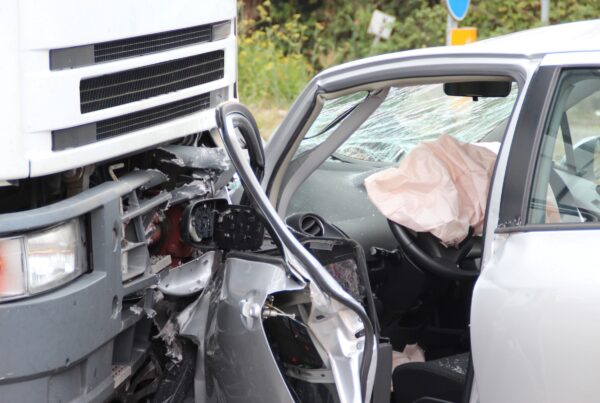Brain injuries are some of the most severe and common personal injuries following a car accident. The traumatic forces on the brain after sudden deceleration can cause contusions, or bruising, resulting in concussion, coma, memory loss, paralysis, and other deficits in the neurologic system.
Therefore, when a patient is seen following a car accident and exhibits traumatic brain injury symptoms, medical staff must determine whether the brain injury is a coup, contrecoup, or coup-contrecoup injury. A coup injury occurs when the contusions on the brain are directly below the point of trauma. A contrecoup injury is when the contusions on the brain are directly opposite the point of trauma. Finally, a coup-contrecoup injury is when there are contusions on the brain both directly below and directly opposite the point of trauma.
What is a Coup Brain Injury?
A coup (pronounced “coo”) brain injury means the brain has been injured directly below the point of trauma.
For example, if a motorist is in a head-on collision at low speed and hits their head on the steering wheel, this would likely be a coup brain injury.
The force of deceleration pushing the head toward the steering wheel is strong, and although the driver’s head stops once it hits the wheel, the brain can keep moving. The point where the head meets the steering wheel is where the most damage occurs–therefore, the brain will hit this area, and it is the epicenter of the damage. Following impact, the brain will ‘right’ itself in its original position, having only made contact at the front of the skull.
What is a Contrecoup Brain Injury?
A contrecoup (pronounced “contra-coo”) brain injury means the brain has been injured directly opposite the point of trauma.
For example, if a motorist is rear-ended, the force would push them into their seat and their head away from the steering wheel, into the headrest.
The sudden acceleration will move the skull toward the site of impact between the cars, but the brain will move slower than the skull. As a result, the brain may hit the front of the skull and bruise – this is opposite the point of trauma; therefore, it is a contrecoup brain injury.
A combination of these two injuries, a coup-contrecoup brain injury, is most common in high-speed accidents and results in the brain being injured both at and opposite the site of trauma. These are most dangerous as multiple parts of the brain are damaged, resulting in more severe symptoms.
Common Causes of Coup-Contrecoup Brain Injuries
The most common causes of these injuries are high-speed car and rollover accidents. Many strong forces are at play due to the speed and dynamics of accidents. Therefore the faster and more aggressive the accident, the higher the likelihood of coup-contrecoup brain injuries. Other potential causes can be slip-and-falls or falls from heights due to the physics of deceleration and a hard surface.
It is essential to use caution when working off the ground or walking in slippery conditions as accidents in these areas are conducive to coup-contrecoup brain injuries. Lastly, although wearing a helmet is good practice, situational awareness is also important. While a helmet protects your skull and brain externally, there is no internal helmet for your brain, and forces can push your brain against the skull resulting in contusion.
Damages Resulting from Coup-Contrecoup Brain Injuries
As a result of coup-contrecoup brain injuries, patients may experience headaches, memory loss, sensory loss, or loss of motor function. In severe cases, patients may be comatose or paralyzed. It is important to seek medical attention following head trauma for a full evaluation as contusions of the brain may take time to manifest on imaging. However, trained physicians can gauge the initial extent of injury based on symptoms following the trauma.
On top of physical injuries, mental anguish and illness are factors that any attorney will consider when preparing a case against the negligent person who caused the accident. The brain controls many functions, including mood and speech. Following a traumatic brain injury, it is possible that a patient’s mood will be irritable or sad without any context. Further, a patient may be unable to communicate. Any of these symptoms would be hard to tolerate and can affect a person’s mental health.
How To File Your Head Injury Claim
Traumatic brain injuries, including coup-contrecoup brain injuries, are difficult for everyone – the patient, the patient’s family, and the treating physicians. Coup-contrecoup brain injuries occur in some of the most devastating accidents imaginable, leaving victims comatose, paralyzed, dead, or living with severe neurological deficits.
If you or a loved one has experienced a coup, contrecoup, or coup-contrecoup brain injury due to another’s negligence, contact The Simon Law Firm, P.C. today for a free, confidential consultation. The brain injury attorneys at The Simon Law Firm know that it is a daily fight to live following a brain injury and will help you understand your legal rights after an accident in St. Louis. We will take on that fight against any negligent party who caused the accident and hold them accountable.







